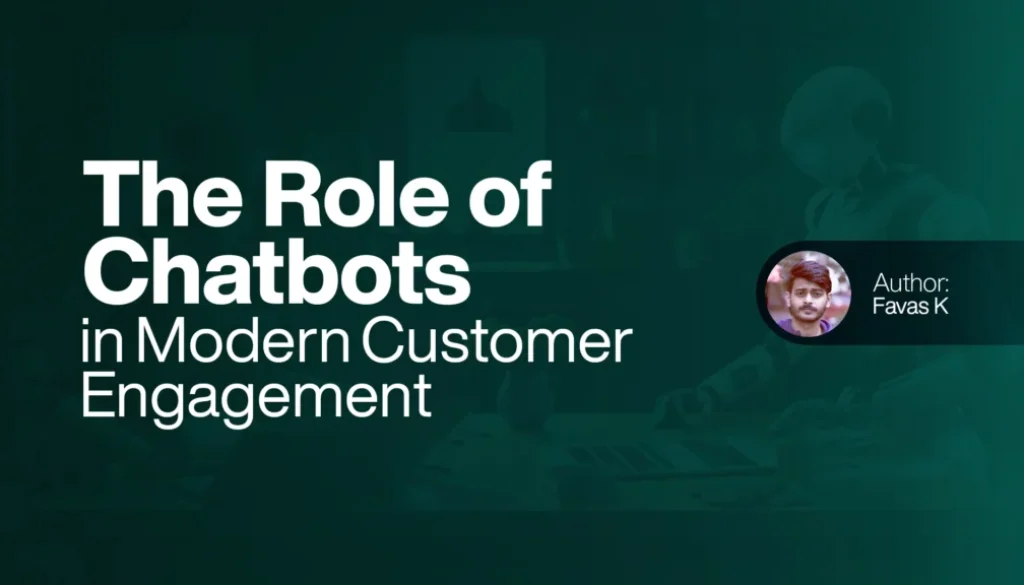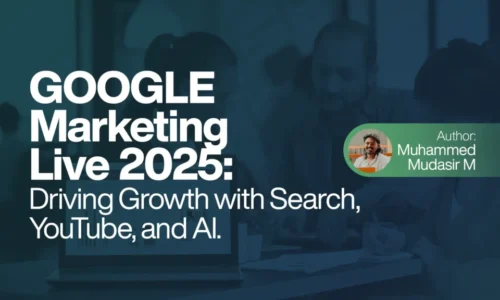The Role of Chatbots in Modern Customer Engagement
As a digital marketer, I’ve seen the customer journey evolve drastically in just a few short years. One thing is clear don’t just buy products anymore. They expect experiences. Personalized, fast, and frictionless experiences. That’s where chatbots are changing the game.
Once considered a gimmick or a glorified FAQ system, chatbots have grown into intelligent, reliable digital assistants that are reshaping how brands interact with customers. They’ve quietly gone from being an afterthought on websites to playing a central role in modern customer engagement.
Let me explain the significance of that and why your brand shouldn’t overlook it.
Table of Contents
1. Customers Want Speed, Not Excuses
In today’s on-demand world, time is currency. When a customer lands on your site or DMs your brand on Instagram, they’re not looking for a delayed reply or a “please wait 24–48 hours” autoresponder. They want answers. Now.
Chatbots deliver that instant gratification. Whether it’s tracking an order, booking a demo, or finding the right product, bots can do it in seconds. That speed keeps users engaged, reduces bounce rates, and leaves a solid first impression.
2. Human–Like Conversations at Scale
One of the biggest wins with chatbots today is how natural they’ve become. Thanks to AI and natural language processing, modern bots can hold conversations that feel (almost) human. They understand context, slang, and intent. They can even throw in a bit of humor or empathy, depending on how you program them.
This means brands can now scale personal conversations—something that would have taken a massive customer support team just a few years ago.
And no, this doesn’t replace humans. It empowers them. Chatbots handle the repetitive stuff, while real people step in for more complex or emotional interactions. It’s a win-win.
3. From Support to Sales–Bots Wear Many Hats
While most people think of chatbots as tools for customer support, their role in driving conversions is often underrated.
Chatbots can:
- Recommend products based on browsing history
- Offer personalized discount codes
- Guide users through the checkout process
- Recover abandoned carts with gentle nudges
They’re no longer just “answering questions.” They’re helping businesses close sales and boost revenue, all while enhancing the user experience.
4. They Meet Customers Where They Are
The consumer journey of today is dispersed across several platforms and is not linear. Someone might come across your company on Instagram, ask a question via Facebook Messenger, and then make a purchase from your website.
With chatbots, you can communicate consistently across all platforms, including your website, WhatsApp, Instagram, Messenger, Slack, and Telegram. Nowadays, having an omnichannel presence is not a luxury. It’s what customers expect.
5. Chatbots Make Your Brand Feel More Accessible
Have you ever arrived at a website only to feel disoriented right away? Too much content, unclear navigation, or a vague feeling of “Where do I go from here?”
A well-thought-out chatbot fills in like a helpful retail employee. “Hey! Do you need assistance finding something? or “Want to find your best fit with a quick product quiz?”
A tiny exchange can have a significant impact.. It makes your brand feel approachable. Human. Helpful.
6. Real-Time Insights = Smarter Marketing
One thing I love about chatbots as a marketer? The data.
Every interaction tells a story. You can see what questions people ask the most, where they drop off, what products they inquire about, and even what language or tone works best.
This feedback loop is gold. It helps you:
- Improve your website UX
- Update your FAQs
- Tweak your ad messaging
- Discover new product opportunities
In other words, your chatbot isn’t just working for your audience—it’s working with you.
7. They’re More Affordable Than You Think
Many small businesses continue to believe that chatbot technology is costly or difficult to implement. However, chatbot platforms with drag-and-drop builders, pre-made templates, and integrated analytics are now accessible to startups and solopreneurs alike.
And how much does a chatbot cost compared to hiring full-time customer service representatives for round-the-clock coverage? The ROI becomes very clear.
Final Thoughts: Not Just a Trend-A Transformation
As a digital marketing consultant, The fact is that chatbots are becoming a vital component of our customer relationship-building process, not just a cool tech tool.
They create a smooth experience by combining efficiency, speed, and personalization. In an increasingly crowded digital landscape, they enable brands of all sizes to remain relatable, relevant, and responsive.
Customers will interact with your chatbot in the same way if you treat it like an add-on. However, it can be one of the most effective channels in your whole marketing strategy if you design it with empathy, intent, and value in mind.
Therefore, don’t limit your thoughts to content, emails, or advertisements the next time you want to increase customer engagement.
Think conversations. Think chatbots.
Author Info
Favas K, a freelance digital marketing consultant in Chennai.
Learner of CDA Digital Marketing Academy in Kerala.



